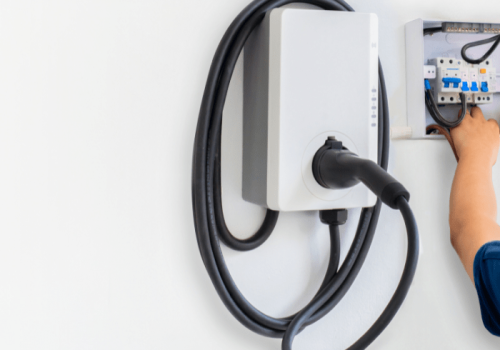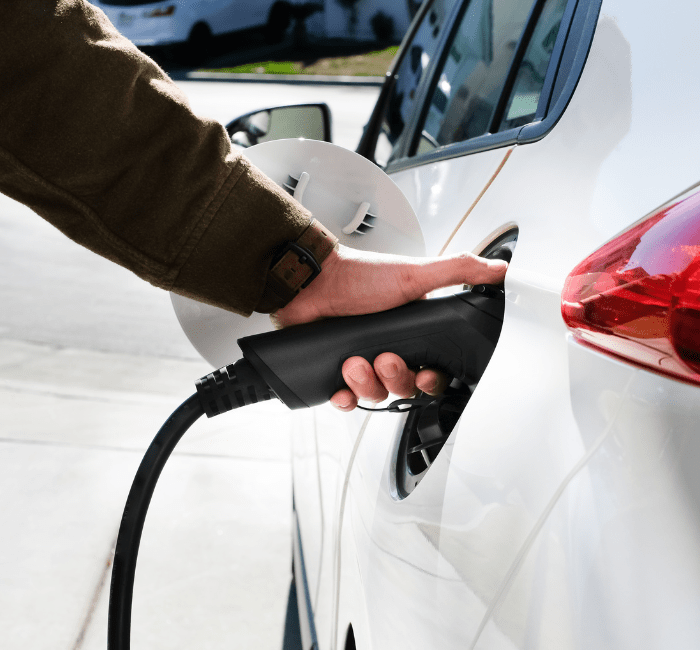EV Charger Installation Checklist: What You Need to Know
As electric vehicles (EVs) become more popular, having a home EV charger is really important. If your EV charger isn’t set up properly, it can cause problems like inconvenient charging, having to use public charging stations more often, and even safety issues.
Without a good home charger, you might face frequent interruptions, higher costs, and possible risks. This EV charger installation checklist will guide you through the essential considerations and steps for a seamless EV charger installation.
By following this simple guide, you can make sure your home charging is convenient and efficient. Don’t let installation issues hold you back—keep reading to learn how to install your EV charger successfully.

Understanding EV Charger Types
Level 1 Chargers
Level 1 chargers are the most basic type, utilizing a standard 120-volt outlet. They are convenient for overnight charging due to their slower speed, typically adding about 3-5 miles of range per hour. While not ideal for long-distance commuters, they are sufficient for those with shorter daily travel needs.
Level 2 Chargers
Level 2 chargers use 240 volts, which makes them charge electric vehicles much faster than Level 1 chargers. They can add around 25-30 miles of range per hour, making them suitable for most EV owners. These chargers often require a dedicated circuit and a professional installation as part of your EV charger installation checklist.
DC Fast Chargers
DC fast chargers are the most powerful, delivering rapid charging directly to the battery. They operate at 480 volts or more, adding about 60-80 miles of range in just 20 minutes. Due to their high cost and power requirements, they are typically found at commercial locations rather than residential settings.
Assessing Your Electrical System
Before installing an EV charger, it’s crucial to evaluate your home’s electrical capacity. Many older homes may not have the infrastructure to support the additional load of an EV charger, especially Level 2 or DC fast chargers. This step is a vital part of your EV charger installation checklist.
Professional Electrical Inspection
Hiring a professional electrician to inspect your electrical system is essential. They can determine if upgrades are necessary and ensure that your system can handle the new charger without causing issues or hazards, making this an indispensable part of the EV charger installation checklist.
Choosing the Right Charger
Not all chargers are compatible with every EV. It’s essential to ensure that the charger you select works seamlessly with your vehicle’s specifications. Consulting your EV manufacturer’s recommendations can help in making the right choice, as noted in this EV charger installation checklist.
Features and Specifications
Modern chargers come with various features such as Wi-Fi connectivity, smart charging capabilities, and enhanced safety mechanisms. Consider what features are important for your needs and budget when working through your EV charger installation checklist.
Location and Placement
Decide whether the charger will be installed indoors, such as in a garage, or outdoors. Indoor installations are generally more protected from the elements, whereas outdoor installations require weatherproofing. This decision is critical in your EV charger installation checklist.
Accessibility and Convenience
The charger should be easily accessible, allowing for simple plug-in and unplugging. Consider the length of the charging cable and the typical parking arrangement to ensure convenience as part of your EV charger installation checklist.
Installation Process
Hiring a licensed electrician is crucial for a safe and code-compliant installation. They have the expertise to install the charger correctly and address any unforeseen issues during the process, an important item on your EV charger installation checklist.
Permits and Regulations
Make sure to check local rules and get any necessary permits before installation. Compliance with local building codes is mandatory to avoid legal and safety issues, making this a key part of your EV charger installation checklist.
Safety Considerations
Proper grounding and circuit protection are vital to prevent electrical hazards. Ground fault circuit interrupters (GFCIs) and surge protectors are recommended to safeguard the charging process, as highlighted in your EV charger installation checklist.
Weatherproofing for Outdoor Chargers
If installing outdoors, ensure the charger is weatherproof and can withstand extreme conditions. Protective covers and enclosures can provide additional safety, another crucial point in your EV charger installation checklist.
Costs and Incentives
Installation costs can vary based on the type of charger and any necessary electrical upgrades. It’s essential to get multiple quotes and understand the full scope of costs involved, an important aspect of your EV charger installation checklist.
Government Incentives and Rebates
Many governments offer incentives and rebates to offset the cost of EV charger installations. Research available programs to take advantage of financial benefits, an advantageous item on your EV charger installation checklist.
Maintenance and Troubleshooting
Regular maintenance ensures the longevity and efficiency of your charger. This includes inspecting connections, cleaning components, and updating software if applicable, a vital part of your EV charger installation checklist.
Common Issues and Solutions
Be aware of common issues such as connectivity problems or slow charging speeds. Having a troubleshooting guide or access to professional support can help resolve these quickly, a helpful tip from your EV charger installation checklist
Future-Proofing Your Installation
Consider future needs when installing your charger. Ensure it’s easy to upgrade to a more powerful charger if necessary, or to add additional units as more EVs are added to your household, a forward-thinking point on your EV charger installation checklist.
Integration with Smart Home Systems
Modern EV chargers can integrate with smart home systems, allowing for better energy management and convenience. Look for chargers that offer these capabilities to future-proof your installation, a savvy tip from your EV charger installation checklist.
Key Takeaways
Installing an EV charger at home is a significant step towards sustainable living and convenience. By following this comprehensive EV charger installation checklist, you can ensure a smooth installation process, optimize the functionality of your charger, and enjoy the benefits of electric vehicle ownership to the fullest.




